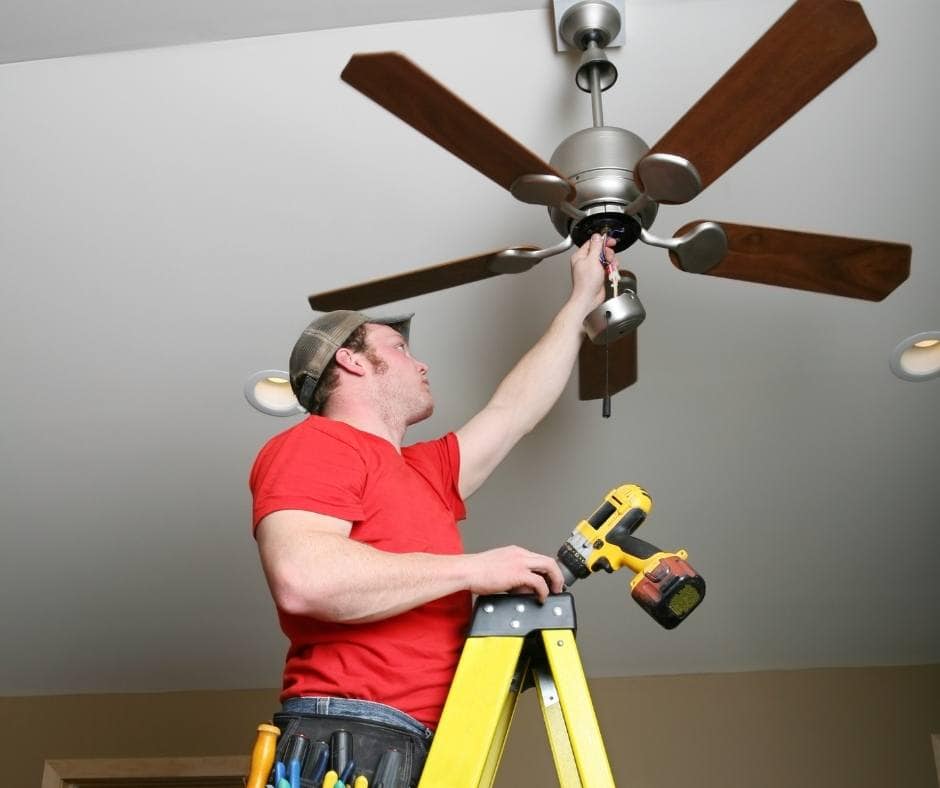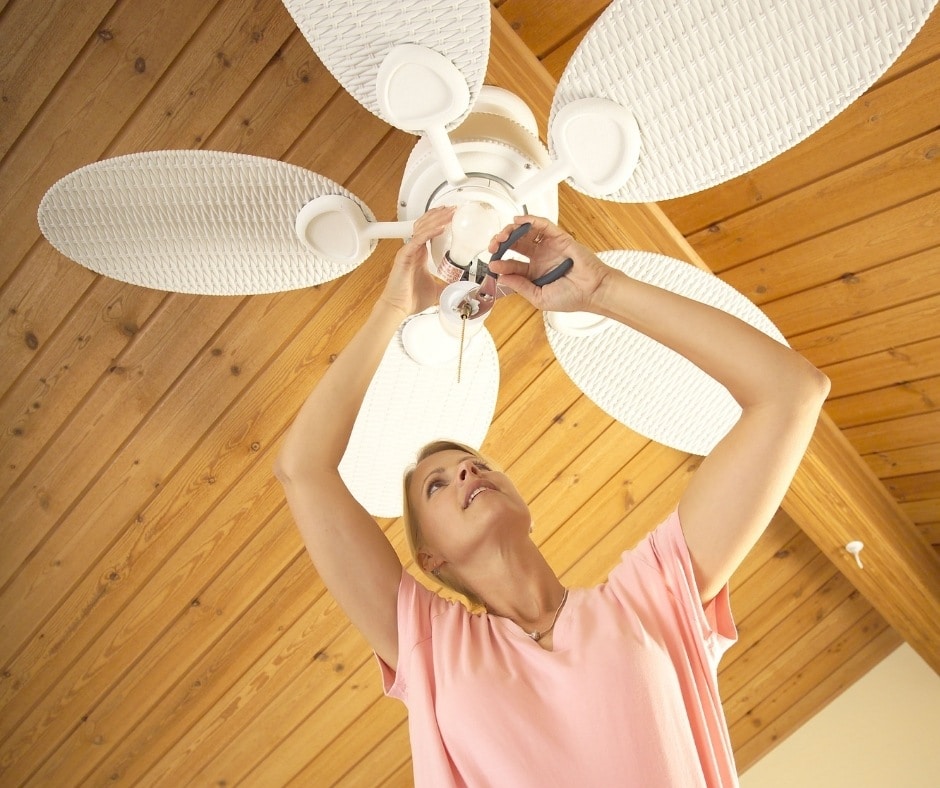If your ceiling fan is making a clicking sound, it’s a strong sign that something is wrong. You’ll notice it right away because your ceiling fans are meant to be silent.
The good news is that ceiling fans aren’t complicated. In most cases, you can fix the problem with a few simple tools. And, you’ll be able to avoid making a service call, which might wind up costing you more than it would to buy a new fan.
We researched some of the most common reasons a ceiling fan will start clicking and put them in this guide. We also ran through the most common ways to fix whatever problem is causing your fan to click.
In This Article We'll Discuss
Reasons why your ceiling fan is making a clicking noise and how to fix it

The good news is that the primary reason ceiling fans start to click is some kind of mechanical problem. Mechanical problems are the easiest and cheapest to address. More importantly, because you’re not dealing with electricity, they’re also safest to fix.
Mechanical
Blade cracked and/or broken: Even a hairline fracture in a fan blade can create a clicking sound because it makes the blades unbalanced. When checking to see if this is the issue, be sure to look closely at each blade.
Loose connection between blade and arm: Over time, the screws that hold the fan blade to its arm can become loose. This is another reason fan blades become unbalanced as they spin.
Loose fan unit: While ceiling fans are usually screwed into ceilings securely, the connection can loosen as it spins. If the entire unit starts to move, the clicking sound is likely the result of a loose unit.
Loose cover: If the ceiling fan light comes with a bulb cover, it can start to loosen over time. In general, you don’t need to screw it in that tightly. However, if it feels like it has a lot of give, that could be the source of the clicking.
Lack of lubricant: The bearings in the fan unit require lubricant on occasion. But, since they’re tucked away near the ceiling, it’s easy to overlook them. If they’re lacking lubrication, they may start to click while the fan spins.
Accumulation of dust: It’s easy to forget to clean the top of your fan when dusting. But you shouldn’t. Dust build-up on top of the blades, and in the unit itself, can throw the fan out of balance. And, that can cause a clicking noise.
Worn padding between fan and mount: Even if your fan is screwed into the ceiling well, it will still wobble a little bit. Over time, the padding between the fan and the ceiling mount can wear thin, which can cause a clicking sound as the fan spins.
If your fan starts to click, it’s probably a sign that the entire unit could use a little TLC. So, we recommend the following steps to help address all the possible mechanical problems.
Start by giving it a thorough cleaning. You should focus on removing any dust particles, so try using a dry microfiber cloth. And, make sure you get everything. That includes the tops of the fan blades and the top of the fan unit.
After you’ve cleaned it, check where the fan is connected to the wall. This is the time to inspect the rubber padding between the fan and its mount. If it’s worn thin, you’ll need to remove the fan and replace it. If it’s not, you’ve saved yourself a lot of work.
If the padding is sound, inspect your fan blades for cracks or fractures. Even if you only need to replace one blade, you should replace them all. That will help to balance them. If your blades are in good shape, tighten the screws holding them in place.
Then, tighten the rest of the screws. That includes the ones holding the light cover in place and the screws in the fan’s housing unit. Don’t make them too tight because they still need to provide some give.
Add some lubricant to the bearings. There is usually a small hole on top of the fan’s housing unit where you can add oil. You’ll only want to add a few drops because too much can capture and hold dust.
Finally, make sure your blades are balanced. You can either use a blade rebalancing kit or do it yourself. Most fans come with rebalancing kits and are available at a lot of big box stores. You can also do it yourself with a tape measure and some coins.
To do it yourself, measure the distance between the ceiling and the tip of each fan blade. If you have one that is more than a one-third inch closer to the ceiling, tape a nickel to the top of the blade. Continue measuring and adding coins until they are all the same distance.
Electrical
Inappropriate dimmer component: A dimmer component that uses too much electricity could cause stress within the circuitry, especially the capacitors. That stress then creates a clicking sound.
Weak capacitor: Like everything, your electrical components will wear out over time. That is especially true of capacitors, which are constantly storing and discharging electricity. Your electrical components can show their age by clicking.
Whenever you’re going to work on the electrical components in your ceiling fan, you should do two things. First, ask yourself if you feel confident doing it safely. Then, if you don’t, consider calling an electrician.
If you feel confident, start by turning off the power in the breaker box. You should never work on a ceiling fan that still has power. If you have a voltmeter, you can test the fan to make sure that the power is not flowing.
Next, carefully remove the fan’s mechanical parts so you can access the electrical components. If you need to replace the dimming unit, you’ll have to do this regardless.
If you had a dimming unit installed, this is a good time to check if it’s compatible with your ceiling fan. If you have questions, contact either the ceiling fan manufacturer or the company that makes the dimming unit.
If they’re compatible, inspect the capacitors. If they look discolored or swollen, that means they’re damaged and not working properly. So, you’ll need to replace them. They either have wires that you screw into the board or they are screwed in themselves.
Conclusion

If your ceiling fan starts clicking, you’ll want to address it promptly because it’s likely a sign that something is broken. This issue could lead to more damage down the road, which will cost more to fix.
Fortunately, you can fix most clicking issues with a little basic upkeep. For example, the fan may need a thorough cleaning, or you may need to tighten a screw or two.
We hope you found this guide on why ceiling fans click helpful. If you did, we invite you to leave a comment down below. You can also share it on your social media networks.

